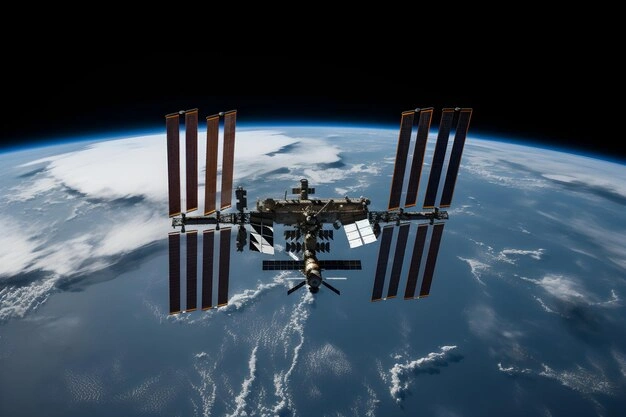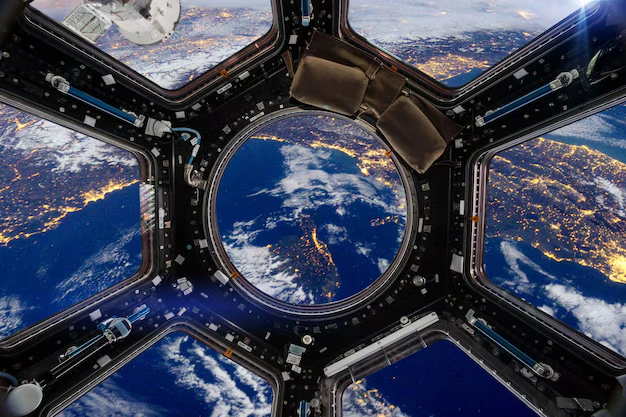For being at the edge to alter the industry of space, SpaceX and its mission by the Falcon 9 Starlink is a very illustrative example that is committing to innovation into the field of space technology. The missions to Starlink 12-18 have marked many key milestones about pushing global satellite internet connectivity forward as well as advancing reusability technologies regarding rocket launching. This section gives a step into major events of the said missions in regards to impacts, importance, and significance achieved in changing the face of future space travels.

1. Overview of SpaceX Falcon 9 and Starlink Missions
The SpaceX Falcon 9 is a two-stage launch vehicle, originally developed for orbital insertion, but mature enough to possibly be a workhorse in what could be theoretically called the roll-out of Starlink, the satellite constellation of SpaceX.
Starlink is an excellent effort from SpaceX in delivering high-speed, low-latency internet to the under connected and underserved areas of the world. The Starlink 12-18 missions are part of the broader program through which hundreds of satellites have been launched into LEO in order to boost coverage and capacity.
2. Starlink 12-18 Mission Highlights
A. Launch Rhythm That Sets History Anew
It was one very remarkable feature on how SpaceX could keep the launch pace in Starlink 12-18. All were launched one after the other and reflected how operational efficiency the company was as well as how reliable the Falcon 9 rocket could be.
- Starlink 12: It deployed on [date], where the launching of 60 satellites to orbit was featured.
- Starlink 13: Then it proceeded without a single break in a bid to maintain momentum.
- Starlink 14-18: The launches enabled SpaceX to launch frequently at times days or even weeks apart.
Fast pace proved that it was not just the technical capability of SpaceX but the Starlink program was scalable as well.
B. Reusability of Falcon 9 Boosters
The characteristic feature of the Falcon 9 rocket is reusability, which brings the cost of traveling into space drastically down. The capability was spectacularly demonstrated in Starlink 12-18 missions:
- First-Stage Landings: All the missions succeeded when, for the first time, a first stage of a Falcon 9 successfully landed on drone ships, with Just Read the Instructions and Of Course I Still Love You being among them.
- Booster Reuse: Most of the boosters had flown multiple times. They were on their 7th or 8th flight. The bottom line is it is a game-changer for doing space missions much more sustainably and more economically.
C. New Generation Starlink Satellites
The mission of Starlink 12-18 Launch new generation satellite featuring better characteristics from its previous counterparts.
- Laser Inter-Satellite Links: The new satellites equipped with laser communications links allow these satellites to have direct information transferring between satellites, and therefore communication between the two satellites can happen directly without being relayed in a terrestrial station. The same way it happens; the satellite network will not be so risky.
- Increased Bandwidth: The next-generation satellites have extremely high bandwidths and internet services can be transmitted undoubtedly faster and more authentic.
- De-Orbit Space Debris at End: SpaceX developed the satellite so that it is de-orbited; which means, once used up for a couple of years, such satellites will not contribute to any issues related to space debris.
D. Global All-Pervasive Internet Connectivity
Starlink 12-18 missions would see the launch of yet more Starlink, connecting almost every part of Earth with broadband internet access.
- Rural and Remote Locations: The mission closed the digital divide as they connected places without any meaningful presence of the Internet.
- Global Coverage: Every Starlink launch meant new geographies-North America, Europe, Australia, and many more-started entering the coverage area.
3. Technological Breakthroughs and Achievements
A. Autonomous Drone Ship Landings
During Starlink 12-18 launch series, near perfect recovery for boosters from landfall for rockets launched via Falcon 9 has been realized by the manner in which this happens through drone ship autonomous landing in the middle of the ocean. This evidences an upgraded system of directionality used in guiding the vehicle that is given out by SpaceX since its stages could be brought back even at terrible weather patterns.

B. Fairing Recovery
The other includes better recovery and reusability cargo fairings. Space X succeeded in catching the noses of the cone-shaped nose coned fairing mid-air with the use of special ships called Ms. Tree, and Ms. Chief, and that is a new set of more cost-effective missions.
C. Improved satellite deployment
It has used the latest launch technologies that can be utilized to launch Starlink to space in a most efficient way possible to orbit. This is done by positioning the satellites at their orbit and then start to work.
4. Environmental and Economic Impact
A. Space Accessibility at Affordability Cost
Lower launch cost: SpaceX has been using reusable Falcon 9 boosters and fairings. It has, thus, taken a giant leap forward for launching satellites to become cost-effective.
With low launch costs, more companies and organizations go into space, meaning that there are more innovation and competition in the aerospace sector.
B. Less Space Debris
SpaceX reduces the level of debris from the produced satellites of the Starlink where the final outcome of such a Starlink manufacture is that self-destruction must occur and it de-orbits itself, thereby causing nearly no destruction in LEO and keeps LEO free of any sort of contamination and most of the debris cannot enter into littering also.
5. Criticism and Concern
Still, a few of them are criticizing, and surely, it is a success for 12-18 in the Starlink.
- Astronomical Problem: The astronomers have complained about the Starlink satellites that these are too bright. The reason is that they are facing the problem to take any kind of astronomical observation. Space X solved it by experimenting with less bright coatings of the satellite.
- Regulatory Issues: Before expanding the coverage of Starlink, it needs approval from many regulatory bodies around the world. And it’s time-consuming.
6. Future Impact of Starlink 12-18 Missions
In terms of success, the success of the Starlink 12-18 missions would pave the way to future space exploration and global connectivity.
- Global Internet Access: Starlink, in association with its constellation, will network the internet to billions of people and change industries from education, health care to agriculture.
- Colonization of Mars: Technologies developed in the Starlink program, along with Falcon 9, will be the most critical tools towards long-term colonization by SpaceX.
- Commercial Space Industry: The success of SpaceX has opened up a thriving commercial space industry, encouraging other companies to venture into new frontiers.

Conclusion
These missions are gigantic for the SpaceX Falcon 9 Starlink 12-18. It is a giant leap toward Internet connectivity in the world and toward reusable space technology. Be it a new launch cadence on record or deploying satellites with advance techniques in their satellite, the missions have proved that what was indeed considered impossible for SpaceX to do is now turned into reality.
When further development of SpaceX is made toward the Starlink constellation and the perfecting of its technologies, it will come closer to realising the world in space exploration and global connectivity. This Starlink 12-18 mission will be a victory not just for SpaceX but also for the aspiration of humankind into space.






GIPHY App Key not set. Please check settings